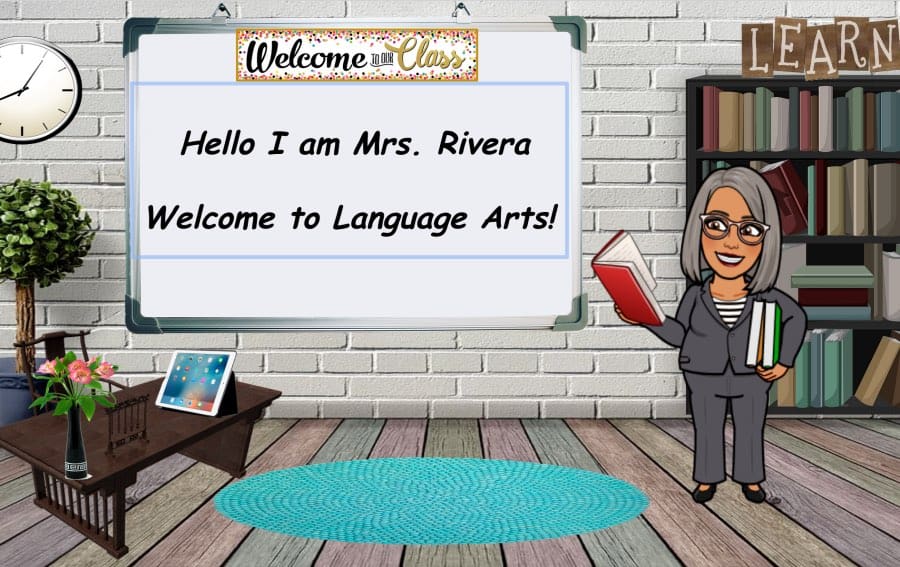
Above: My sister, who teaches remotely in Texas, created this BitMoji classroom for her students.
BitDepth#1266 for September 10, 2020
Between last week and next week, schools will reopen for online learning for thousands of students and for roughly 15 percent of them, it will be their first time attending a new school. For most in primary school, it’s their first year with a new teacher.
Another cohort of 19,344 students will join them in late October or early November after their school assignments are determined by the Secondary Entrance Assessment (SEA).The challenges of virtual schooling will be amplified for children entering a new school, entering an unfamiliar institution without the solid boundaries of a space, the resonance of old friendships, the reassuring presence of past teachers.
For them, infants entering primary school, new secondary school students, freshmen at university, everything will be new, at home.
The struggle in TT has been to create a new pipeline to connect teachers with their students, but we must not lose sight of education as a social experience.
It is a shared seance of learning presided over by a shaman of knowledge in shifting circumstances of social order and group dynamics.
The best students don’t only learn the curriculum when they attend school, they learn how to learn and how to find their place in a microcosm of the wider world.
It is at school that we learn to be people, for better or worse.
Even across decades, I can still recall my first days at Tranquility Primary, figuring out whether I could afford more paradise plums, my first tentative steps up to the second floor of Mr Romilly’s Preparatory school after I transferred there to sharpen my education for Common Entrance, the giddy pride when I found myself overwhelmed by the size and grandeur of Trinity College, a white duomo nestled in a green abundance of citrus trees.
In each of those spaces, I found a different aspect of myself through the reflection of my presence, my voice and my friendships each returning an echo of understanding that went beyond formal education.
How does a virtual system replicate all the things that are not on the written curriculum, the nuances of interaction that are necessary for a larger understanding of what teachers can really teach and how a student can truly learn?
Opening communication is only the start.
The best students don’t only learn the curriculum when they attend school, they learn how to learn and how to find their place in a microcosm of the wider world.
Expanding that engagement to embrace more of the virtues of the education process, the undocumented echoes and ripples that are part of the character of physical schools is the next challenge.
During my time at Trinity, most teachers acquired a nickname, a consequence of some personal quirk of character or physicality. You can’t give a nickname to someone you don’t know, and it won’t acquire cachet without group experience.
How can those nuances of intimacy and shared space translate into virtual learning?
For thousands of children showing up to a new school for the first time, the new school is actually their old home, an experience of integration couched in the exceedingly familiar.
The experience of going to school will have to happen in their minds and how teachers frame that will be an important part of the process.
Some teachers are using Bitmoji or styling their virtual workspaces to reflect their personality and teaching intent, offering remote students clues they can interpret and engage with over time.
In a week, I’ll be facing my own challenge, figuring out how to move the first half of the course on photography I teach at UWI’s Film School into virtual format, the half that normally benefits from my looking over the shoulder of students as they work to grasp the concepts.
And that’s a far easier hurdle to clear than welcoming a hundred new students to a new school without actually meeting them.
For students in their first year at the university, there is FYE 101, a virtual orientation Course packaged as self-paced online videos. According to UWI, it will provide new students with “a dynamic orientation experience ahead of the start of the 2020/2021 academic year.”
It doesn’t look like I’ll be meeting any of my students in person this semester, and the practice of teaching online is not kind to my propensity for dry wit and occasional sarcasm.
I’ll have to temper that and seek to be less tutor and more coach to bridge the tactile gap between students, their use of equipment and my intuition about where my interventions might prove most useful.
In separating “going to school” from “learning,” we will lose something that will be deeply felt if the pandemic continues into the middle of next year.
Pedagogy is important, but compassion and humanity to temper the experience of instruction to its greatest strength.
Online, educators should expect to do less “teaching at” and more “coaching with” to create learning environments that flourish in these complicated circumstances.


